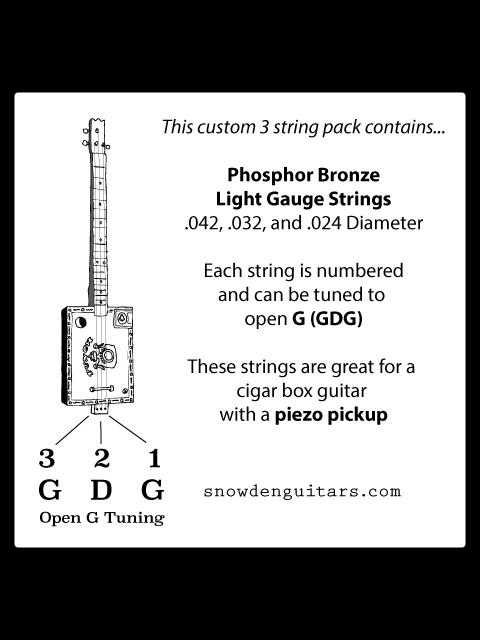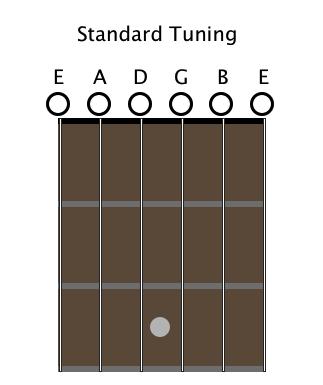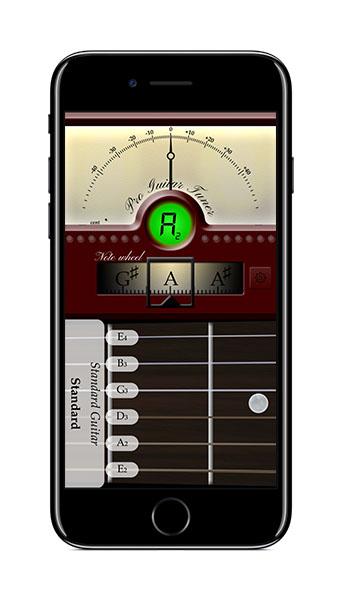Imagine standing at the crossroads of tradition and innovation, where the soulful echo of the Delta blues meets the raw, untamed spirit of DIY craftsmanship. It’s here that the enigmatic cigar box guitar arises, its unique voice waiting to be discovered through the art of tuning. But could the very essence of your sound be hidden in the way you turn those pegs? As a versatile guitarist, I’ve learned that tuning is not just a technical necessity; it’s a gateway to unlocking the full potential of your instrument’s sonic landscape.
Join me as we explore the intricacies of cigar box guitar tuning, where I’ll share the best tuning methods and tips gleaned from years of passionate exploration. Whether you’re a seasoned musician or a curious beginner, this guide promises to transform your understanding and deepen your connection with the music you create. Together, let’s embark on this journey to unearth the rich, expressive tones of this storied instrument.
What is Cigar Box Guitar Tuning?

Did you know that the way you tune your cigar box guitar can significantly affect its sound and playability? In my experience, understanding the nuances of different tunings can transform your playing style and deepen your connection to the music. At its core, *cigar box guitar tuning* refers to the art and practice of adjusting the pitch of the strings to achieve a specific sound or musical range. *Common tunings* such as Open G and Open D are popular among players for their straightforward chord formations and rich tonal qualities.
Exploring the world of cigar box guitar tuning has exposed me to a variety of musical textures and emotional depths that are unique to this versatile instrument. By experimenting with different tunings, I discovered that even a subtle tweak can *unlock new creative avenues* and imbue my performances with a distinctive flair. This level of personal customization not only enhances playability but also lends a voice to the music that’s wholly my own.
Why Tune a Cigar Box Guitar?

Tuning was always an essential part of my practice; it’s the foundation upon which creativity and expression are built. When I first started with cigar box guitars, I discovered more than the unique tones and aesthetic charm they offer. What if I told you that proper tuning could elevate your playing experience to a whole new level? This simple yet artful process can refine the sound and make your guitar sing in ways you hadn’t imagined.
Proper tuning transforms your instrument, opening doors to vibrant soundscapes and enabling you to fully express your artistic vision. By setting your strings to perfection, each note resonates with clarity, enhancing both performance and enjoyment. As you learn how to tune a cigar box guitar, you’ll uncover its true potential and distinct voice.
Having spent countless hours experimenting with different tuning options, I’ve gathered valuable tuning tips for beginners that guide not just the technical aspects, but also the philosophy behind them. Every tuning session is an exploration that deepens your connection to your craft, offering endless creative possibilities. Whether it’s achieving perfect pitch or exploring new sound dimensions, tuning is key. Let the journey continue with even more captivating methods and tips ahead.
Who Uses Cigar Box Guitars?

Throughout my journey, I’ve met incredible musicians in the cigar box guitar community, each bringing their unique flair and enthusiasm to this art form. Have you ever wondered who’s behind the growing popularity of cigar box guitars and their distinctive sound? From passionate hobbyists to seasoned performers, the community known as Cigar Box Nation is as diverse as it is dedicated.
This eclectic group includes artists driven by curiosity and a love for experimentation—musicians who relish the raw, organic tones only a cigar box guitar can produce. Their creativity transforms simple materials into powerful instruments that convey stories untold by traditional guitars. I’ve been fortunate to witness firsthand how players develop unique styles, refining their approach with every strum of a cigar box guitar chord.
These individuals are not just preserving a musical tradition; they’re evolving it. With each handcrafted instrument, the music world gains personalities who infuse life into an art form that resonates across genres. Whether performing at intimate local gatherings or on wider stages, this community breathes new energy into the music scene, proving that innovation and tradition can harmoniously coexist.
When to Tune Your Cigar Box Guitar

The moment you tune your cigar box guitar can significantly impact its sound and your performance. Is there an optimal time to tune your cigar box guitar for the best sound and performance? Through my extensive experience, both on the road and in the studio, I’ve found that timing your tuning sessions is crucial. The best tuning moments often occur just before you play, particularly during live gigs or recording sessions. This ensures that environmental changes—such as shifts in temperature and humidity, which can affect string tension—are accounted for and your guitar is aligned with the immediate surroundings.
For beginners, I recommend using tuning apps as a reliable companion. These apps offer pinpoint accuracy, making the process straightforward and reducing the guesswork. One key tuning tip I’ve learned is to pay attention to how your strings feel and sound after tuning. Let your ear guide you; with time, you’ll develop a nuanced understanding of your instrument’s unique voice. This thoughtful approach not only enhances sound but also builds an intuitive connection with your instrument.
How to Tune a Cigar Box Guitar
Standard Tunings

In my exploration of the *harmonic richness* of the cigar box guitar, I often revert to open G tuning, also known as GDG tuning, a popular choice that resonates with many players due to its intuitiveness and versatility. Open G tuning simplifies the playing of chords, making it an ideal starting point for both beginners and seasoned musicians who seek a balance between tradition and innovation. This tuning allows the guitar to sing with a distinct, open voice, unlocking a spectrum of sound that is both traditional and uniquely vibrant.
Understanding the nuances of standard tuning, such as GDG, is fundamental when learning how to tune a cigar box guitar. It offers a solid foundation from which to explore more complex *musical landscapes*. By implementing this tuning method, players can effortlessly navigate between rhythms and melodies, enhancing their creative expression. In the upcoming sections on alternate tunings, we will delve deeper into how variations can further expand your musical vocabulary, pushing the boundaries of what this remarkable instrument can achieve.
Alternate Tunings

As we explore the world of alternate tunings for cigar box guitars, we begin to understand the transformative power they hold for musicians. Experimenting with alternate tunings has been a key part of my growth as a guitarist, allowing for fresh melodies and harmonies. Instead of sticking solely to standard tunings like the widely used 3 string tuning of G-D-G, alternate tunings open up a palette of sonic possibilities that can inspire new creations.
Diving into these tunings breathes life into the versatile nature of the cigar box guitar, offering beginners and seasoned players a chance to break free from the conventional. This approach not only broadens one’s musical vocabulary but also invites a deeper emotional connection with the instrument. The simplicity of adjusting the strings can lead to complex and rewarding soundscapes. As we progress, understanding these techniques enhances our mastery and enriches the overall experience of playing.
Tuning Tips for Beginners

Embarking on the journey of cigar box guitar tuning can feel daunting, but it’s crucial for developing your skills and sound. As a beginner guitarist, I often underappreciated the importance of knowing my string gauge—these details can greatly affect tuning. Ensuring you have the right string gauge for cigar box guitars not only facilitates proper tuning but also enhances playability and tone.
To start, focus on the basic tunings and familiarize yourself with standard pitches. This builds a solid foundation for exploring alternate tunings later. Utilizing electronic tuners or tuning apps can streamline the process, making it accessible even for those of us just starting out. As you gain experience, these tuning tips for beginners will transition from concepts to habits, enriching your musical journey.
With each tuning attempt, you’re not just adjusting notes but actively shaping the essence of your sound. Embrace the challenges, and revel in the transformation from novice to seasoned player. Up next, we’ll explore how using tuning apps can further simplify this process.
Using Tuning Apps

Embracing modern technology, *tuning apps* have become an indispensable tool in my arsenal for achieving perfect sound quality with cigar box guitars. By providing a visual guide, these apps simplify the tuning process, allowing for quick adjustments before any performance. The beauty of tuning apps lies in their ease of use; they cater to both novices and seasoned players, ensuring accurate tuning with minimal effort.
When you’re in the midst of rehearsals or preparing for a gig, having a reliable tuning app on your smartphone ensures your instrument stays perfectly pitched. I’ve found that apps often offer features like *photo guides for cigar box guitars*, which help users visually comprehend string placements—a boon for both learning and tuning efficiency.
Integrating these digital tools complements traditional tuning methods, providing a comprehensive solution to maintain the unique sound of cigar box guitars, supporting the subsequent discussions on tuning tips for beginners and alternate tunings in this guide.
Conclusion
What key takeaways can ensure your cigar box guitar always sounds its best? Throughout this guide, we’ve explored the best tuning methods that breathe life into your instrument, turning every strum into a resonant masterpiece. My journey through the world of guitar has reinforced one truth: tuning is an art that continually evolves with each instrument. Understanding how to tune a cigar box guitar is a skill that grows with practice and patience, tailored to the unique voice of each instrument.
The importance of tuning can’t be overstated. Whether you’re a seasoned musician or a curious beginner, employing standard or alternate tunings not only enhances your sound but also enriches your playing experience. Remember, using tuning apps and embracing a methodical tuning approach are essential steps in mastering your craft. In conclusion, the key to unlocking the full potential of your cigar box guitar lies in your commitment to consistent tuning practices and your willingness to explore diverse musical avenues.
FAQs

Teja Gerken, a fingerstyle guitarist with a unique blend of folk, classical, jazz, and world music, has made significant contributions to the guitar world. Known for albums like ‘On My Way’ and ‘Postcards’, and as a co-founder of Peghead Nation, he brings his expertise from intimate venues to global stages. At Fretterverse, Gerken offers deep insights into diverse fingerstyle techniques and musical fusion.
